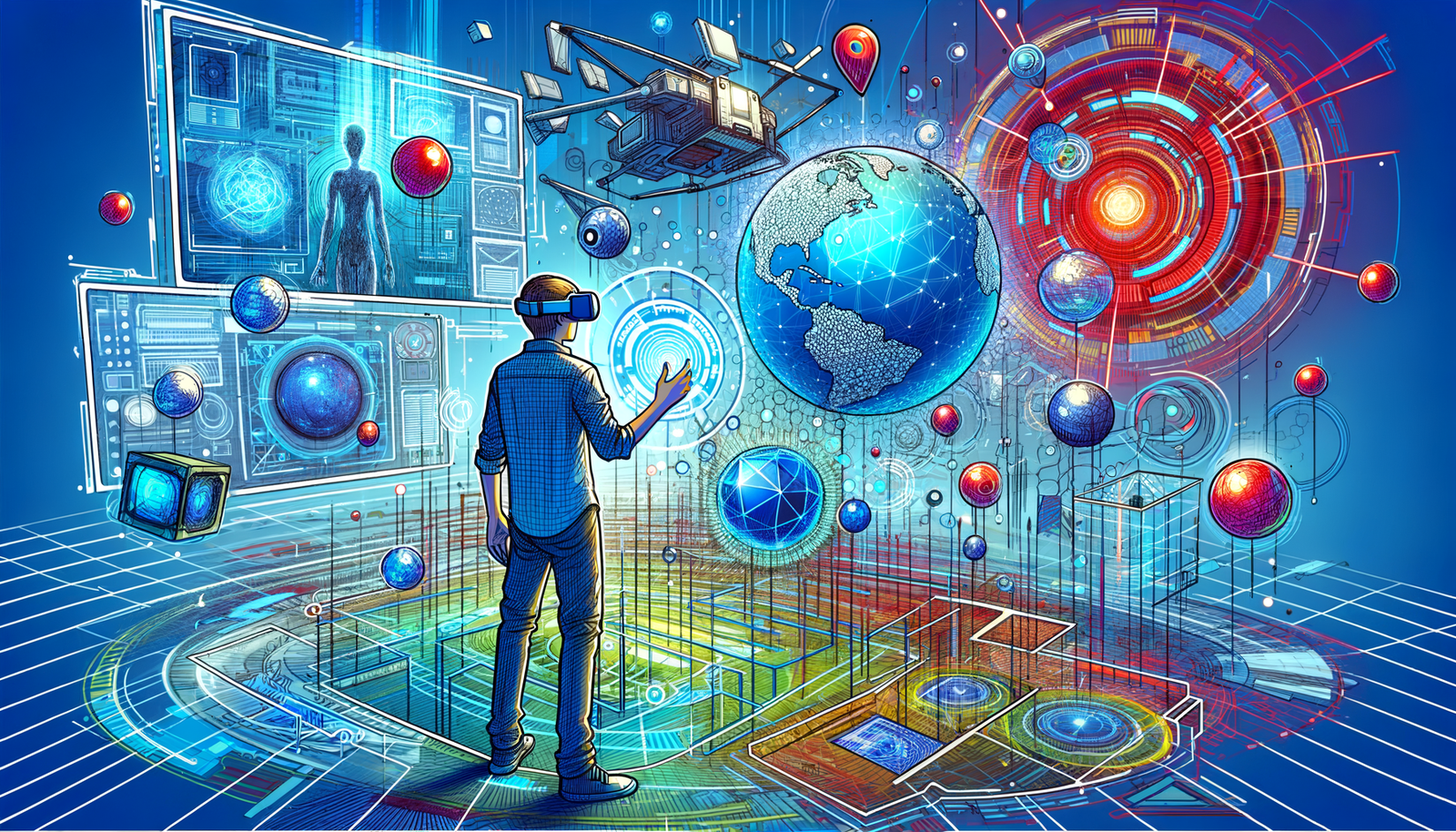Your Cart is Empty
Customer Testimonials
-
"Great customer service. The folks at Novedge were super helpful in navigating a somewhat complicated order including software upgrades and serial numbers in various stages of inactivity. They were friendly and helpful throughout the process.."
Ruben Ruckmark
"Quick & very helpful. We have been using Novedge for years and are very happy with their quick service when we need to make a purchase and excellent support resolving any issues."
Will Woodson
"Scott is the best. He reminds me about subscriptions dates, guides me in the correct direction for updates. He always responds promptly to me. He is literally the reason I continue to work with Novedge and will do so in the future."
Edward Mchugh
"Calvin Lok is “the man”. After my purchase of Sketchup 2021, he called me and provided step-by-step instructions to ease me through difficulties I was having with the setup of my new software."
Mike Borzage
Embracing Spatial Computing: Transforming Design with AR, VR, and MR Technologies
October 18, 2024 6 min read


Introduction to Spatial Computing in Design
The field of design is undergoing a significant transformation with the advent of spatial computing, a technology that integrates digital information with the physical world. Spatial computing refers to the ability of computers to interact with and manipulate real-world environments, enabling devices to perceive and interpret three-dimensional spaces seamlessly. This technology is particularly relevant in design, where understanding and visualizing spatial relationships is crucial. By bridging the gap between digital models and physical contexts, spatial computing enhances designers' ability to create more intuitive and immersive experiences.
Historically, design processes have evolved from hand-drawn sketches and physical models to computer-aided design (CAD) and sophisticated 3D modeling software. While these tools have significantly increased efficiency and precision, they often lack the immersive quality that comes from interacting with a physical object or space. Spatial computing represents the next step in this evolution, providing a more natural and interactive approach to design. It allows designers to visualize and manipulate their creations within real-world contexts, offering a deeper understanding of scale, proportion, and user interaction.
In architecture and product development, spatial computing enhances design practices by enabling professionals to experience their creations in a tangible way before they are built. Architects can walk through virtual models of their buildings, assessing spatial relationships and making adjustments in real-time. Product designers can interact with virtual prototypes, testing functionality and ergonomics without the need for physical models. This immersive approach not only improves the design process but also facilitates better communication with clients and stakeholders, who can experience the design firsthand rather than relying solely on abstract representations.
Key Technologies Driving Spatial Computing
The rise of spatial computing in design is propelled by key technologies such as augmented reality (AR), virtual reality (VR), and mixed reality (MR). AR overlays digital information onto the physical world, enhancing real-world experiences with virtual elements. VR creates a completely immersive digital environment, allowing users to interact within a fully simulated space. MR combines elements of both AR and VR, enabling digital and physical objects to coexist and interact in real-time. These technologies provide designers with versatile tools to visualize and manipulate designs in ways that were previously impossible.
Advancements in hardware have been instrumental in enabling spatial computing. Modern sensors, headsets, and interfaces have evolved to provide high-resolution visuals, precise tracking, and intuitive control mechanisms. Devices like advanced head-mounted displays offer immersive experiences with greater comfort and accessibility. The development of motion sensors, depth cameras, and haptic feedback devices allows for more natural interactions within virtual spaces. These hardware innovations reduce barriers to adoption by making spatial computing more user-friendly and cost-effective.
Software platforms and applications play a critical role in facilitating spatial design experiences. Sophisticated software enables the creation of detailed 3D models, environmental simulations, and interactive elements. Tools such as Unity and Unreal Engine provide robust platforms for developing AR and VR experiences. Additionally, specialized design software integrates spatial computing capabilities directly into the design workflow. This integration allows designers to seamlessly transition between traditional modeling and immersive visualization, enhancing efficiency and fostering innovation.
Practical Applications of Spatial Computing in Design
Spatial computing offers a myriad of practical applications in design, significantly transforming the way architects and product designers approach their work. In architectural design, spatial computing enables professionals to envision spaces in a more immersive manner. By utilizing VR and AR technologies, architects can create virtual walkthroughs of their building designs, allowing for comprehensive exploration of spatial relationships, lighting, and materials. This immersive visualization aids in identifying design flaws early in the process and facilitates more informed decision-making.
Client presentations benefit greatly from spatial computing, as clients can experience the proposed designs in a realistic context. Instead of relying on 2D drawings or static 3D models, clients can virtually walk through their future spaces, providing immediate feedback and fostering a collaborative design process. This interactive approach enhances client understanding and satisfaction, as they can visualize how the design will function in reality.
In product design, spatial computing is revolutionizing the creation of immersive prototypes. Designers can develop virtual models of products and simulate their usage in real-world scenarios. This allows for thorough testing of ergonomics, functionality, and user interaction before producing physical prototypes. Additionally, user testing can be conducted in a virtual environment, gathering valuable feedback without the need for costly and time-consuming physical models. This accelerates the design cycle and reduces development costs.
The benefits of incorporating spatial computing into design workflows are substantial. Key advantages include:
- Improved collaboration: Spatial computing facilitates better communication among team members by providing a shared virtual space where ideas can be visualized and discussed in real-time.
- Error reduction: Early identification of design issues through immersive visualization minimizes the risk of costly mistakes during the construction or manufacturing phases.
- Enhanced creativity: The ability to interact with designs in a tangible way sparks innovation, as designers can experiment with concepts more freely and observe immediate results.
By leveraging these benefits, spatial computing not only streamlines the design process but also elevates the quality and functionality of the final product.
Challenges and Future Prospects for Spatial Computing in Design
Despite the significant advantages, spatial computing in design faces several challenges that hinder its widespread adoption. One of the primary limitations is the cost implication associated with acquiring the necessary hardware and software. High-quality AR and VR equipment can be expensive, making it a substantial investment for design firms, especially smaller ones. Additionally, the development of custom spatial computing applications may require specialized expertise, further increasing costs.
Technology adoption barriers also exist due to the learning curve associated with new tools. Designers accustomed to traditional methods may find it challenging to adapt to spatial computing technologies without proper training. This necessitates investment in user training and professional development to ensure that staff can effectively utilize these new tools. Resistance to change and lack of familiarity can slow down the integration of spatial computing into standard design practices.
Looking to the future, the prospects for spatial computing in design are promising. As technology continues to advance, it is expected that hardware costs will decrease, and devices will become more accessible. Innovations in software development are anticipated to make spatial computing tools more intuitive and user-friendly, reducing the learning curve for new users. Integration of spatial computing capabilities into mainstream design software will further streamline adoption, allowing designers to incorporate immersive experiences seamlessly into their existing workflows.
The potential impact on the design industry is substantial. Spatial computing has the ability to transform traditional design paradigms, enabling more collaborative, efficient, and creative processes. For software developers, this presents an opportunity to create new tools and applications that cater to the evolving needs of designers. Users must stay informed about these advancements and consider how integrating spatial computing can enhance their work. By proactively embracing these technologies, designers can stay competitive in a rapidly changing industry.
Conclusion
Spatial computing is undeniably transforming design practices by bridging the gap between the digital and physical worlds. By enabling designers to interact with their creations in immersive and intuitive ways, it enhances understanding, fosters innovation, and improves communication with clients and stakeholders. The integration of technologies such as AR, VR, and MR into design processes represents a significant advancement, offering tools that were once the realm of science fiction.
The importance of adaptability in the design process cannot be overstated. As the industry evolves, professionals must be willing to embrace emerging technologies to remain relevant and effective. Leveraging spatial computing requires not only investment in new tools but also a shift in mindset towards more collaborative and interactive design methodologies. By adopting spatial computing, designers can unlock new levels of creativity and efficiency, ultimately delivering better outcomes for their clients.
In light of these developments, there is a clear call to action for practitioners to explore spatial computing tools. By experimenting with these technologies, designers can gain firsthand experience of their potential benefits and challenges. This proactive approach will position them at the forefront of the industry, ready to capitalize on the opportunities that spatial computing presents. The future of design is immersive, interactive, and spatially aware, and those who adapt will lead the transformation.
Also in Design News

Cinema 4D Tip: Matrix-Driven Instancing for High-Performance Scattering
December 20, 2025 2 min read
Read More
V-Ray Tip: V-Ray Anisotropy Techniques for Brushed Metals and Hair
December 20, 2025 2 min read
Read More
Revit Tip: Revit Nested Tagging: Shared Nested Families and Roll-Up Parameters
December 20, 2025 2 min read
Read MoreSubscribe
Sign up to get the latest on sales, new releases and more …


